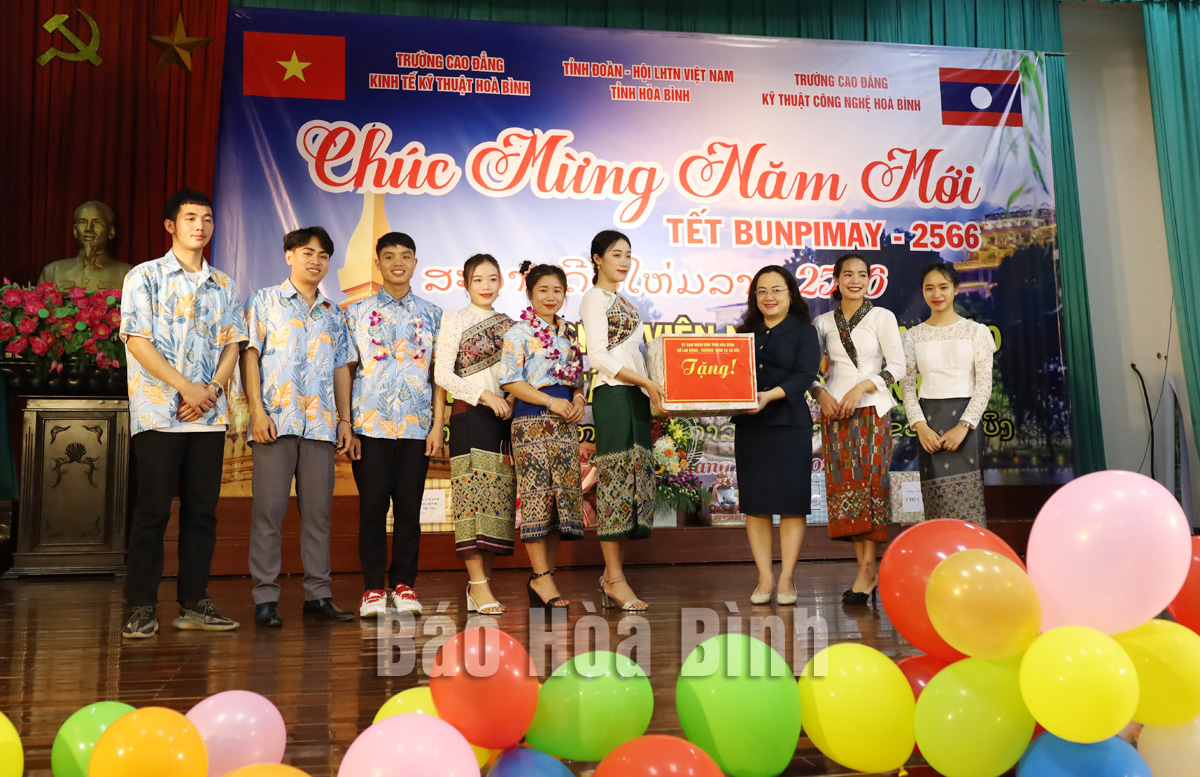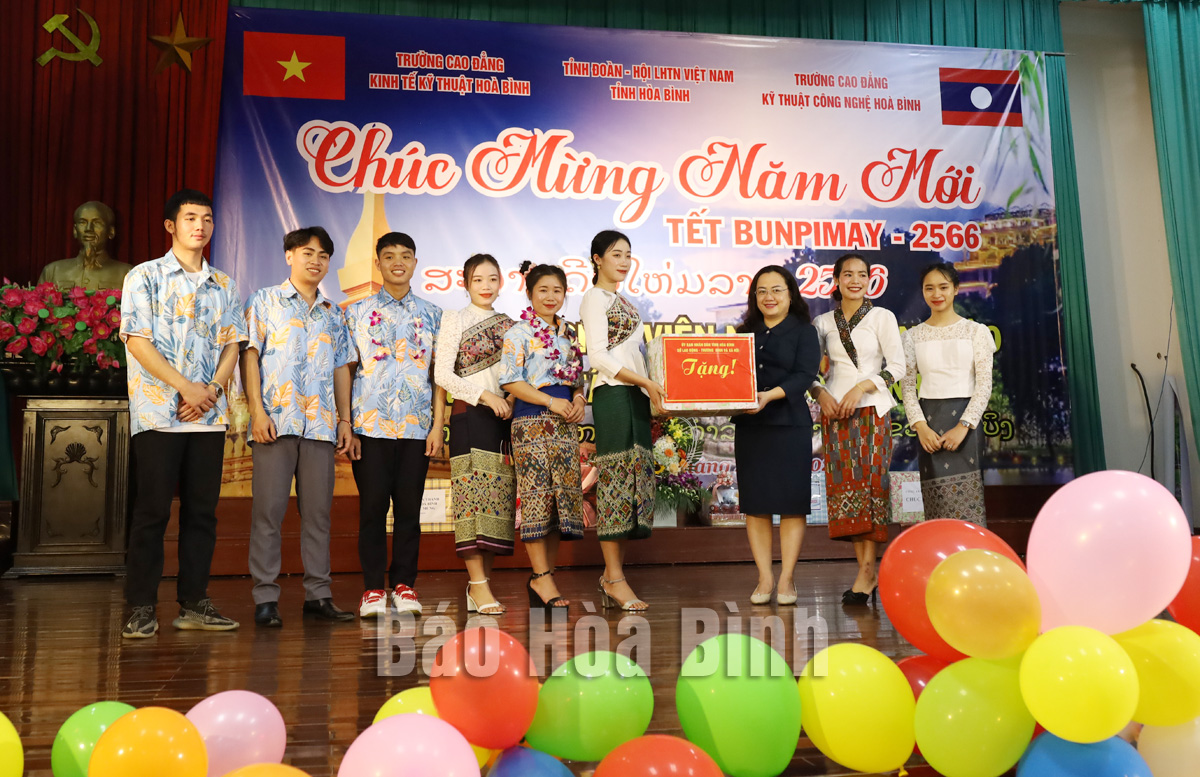
(HBO) - On April 14, Hoa Binh College of Economics and Technology, Hoa Binh College of Engineering and Technology cooperated with the Provincial Youth Union to organize Laos Bunpimay Traditional New Year for the international students and students studying at these two schools. There was the attendance of the leaders from the Department of Labor - Invalids and Social Affairs, the Provincial Public Security, Vietnam - Lao Friendship Association and Lao - Thai Friendship Association of Overseas Vietnamese.

The leaders from the Department
of Labor, War Invalids and Social Affairs were giving gifts to congratulate
Laos students on the occasion of the traditional New Year.
Bunpimay is a traditional Laos
New Year that takes place from April 14-16 every year. On these days, the
people splash water to pray for good luck and peace for the whole year.
Currently, there are 58
international students studying in Hoa Binh College of Economics and Technology
and Hoa Binh College of Engineering and Technology. In addition to the human
resource training, the schools have created the best conditions for the
students to study, live and organize many meaningful and practical activities
to help them integrate and strengthen Vietnam - Laos friendship and solidarity.
On the occasion of the
traditional New Year, the participants and the school gave flowers, sent their
best wishes to the students, and welcomed the new year with the traditional
ceremony of tying the thread, the cultural and culinary exchanges.
With an increasingly vibrant and widespread emulation movement aimed at building cultured residential areas and cultured families, Yen Thuy District has been making steady progress toward improving both the material and spiritual well-being of its people, while fostering a civilized, prosperous, beautiful, and progressive community.
Once lacking recreational spaces and community facilities, Residential Group 2 in Quynh Lam Ward (Hoa Binh City) has recently received attention for the construction of a new, spacious, and fully equipped cultural house. The project followed the model of state support combined with public contributions in both labor and funding.
The "All people unite to build cultural life" movement, which has been effectively integrated with Kim Boi district’s socio-economic development goals, is fostering a lively spirit of emulation across local residential areas, hamlets, villages, public agencies, and enterprises. In addition, through the initiative, traditional cultural values are being preserved and promoted, while community solidarity and mutual support in poverty reduction and economic development are being strengthened.
A working delegation of the Hoa Binh provincial People’s Committee led by its Permanent Vice Chairman Nguyen Van Toan on June 11 inspected the progress of a project to build the Mo Muong Cultural Heritage Conservation Space linked to tourism services in Hop Phong commune, Cao Phong district.
Born and growing in the heroic land of Muong Dong, Dinh Thi Kieu Dung, a resident in Bo town of Kim Boi district, in her childhood was nurtured by the sweet lullabies of her grandmother and mother. These melodies deeply imprinted on her soul, becoming an inseparable part of her love for her ethnic group's culture. For over 20 years, this love for her hometown has driven Dung to research, collect, and pass down the cultural values of the Muong people to future generations.
In the final days of May, the Ethnic Art Troupe of Hoa Binh Province organized performances to serve the people in remote, mountainous, and particularly disadvantaged areas within the province. These were not just ordinary artistic shows, but they were the meaningful journeys aimed at spreading cultural values, enhancing the spiritual life of the people and contributing to the preservation of ethnic minority cultural identities.



